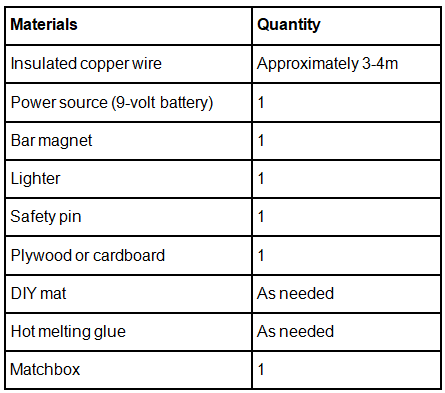School Science Projects - Simple Electric Motor | DIY Science Fun: Cool School Projects - Class 6 PDF Download
Introduction
Electricity, the fascinating flow of charge through a conductor, captivates science students as they delve into the world of scientific exploration. Science fairs offer a fantastic platform to showcase various projects related to electricity, such as electromagnets, DC motors, and even potato-powered electricity. In this article, we will focus on a captivating science fair project that explores the wonders of electricity: creating a simple electric motor. This project will not only amaze and engage young minds but also provide a deeper understanding of the fundamental concept of DC motors.
I. Exploring the Concept of a Simple Electric Motor
Before diving into the project itself, let's take a moment to understand what a simple electric motor is and how it functions. A simple electric motor is a device that converts electric energy into mechanical energy, resulting in rotational motion when electricity is supplied. By harnessing the power of a magnetic field and directing the flow of electricity through specific components, we can witness the magic of an electric motor in action.
II. Materials Required
To embark on this exciting electricity science fair project, you will need a handful of easily accessible materials found around your house. Gather the following items:
- Insulated copper wire (approximately 3 to 4 meters)
- A power source, such as a 9-volt battery or an adapter
- One bar magnet
- Lighter and safety pin
- Plywood or cardboard for the frame structure
- Additional basic materials like a DIY mat, hot melting glue, and a matchbox.
III. Step-by-Step Guide to Creating a Simple Electric Motor
With all the necessary materials in hand, let's explore the step-by-step process of constructing your own simple electric motor:
- Prepare the base: Start by taking a piece of plywood and enhance its stability by gluing two small wooden blocks to it.
- Set the magnets: Position two bar magnets between the small wooden blocks and secure them in place using safety pins.
- Create a ring with the copper wire: Using a bottle cap or a similar object as a template, shape the insulated copper wire into a ring. Pass the wire ends through the holes in the safety pins.
Note: Remember to remove the plastic coating from the wire ends before attaching them to the safety pins. This ensures a proper flow of electricity for the project to work effectively. - Activate the motor: Once the setup is complete, supply electricity to the motor by connecting the wire ends to the power source.
- Witness the rotation: As electricity flows through the wire, the motor will come to life and start rotating, showcasing the wonders of a simple electric motor.
IV. Advantages of a Simple Electric Motor
The simplicity and versatility of electric motors offer numerous advantages that make them indispensable in various devices. Let's explore some of the merits of using a simple electric motor:
- Fast response time: Electric motors exhibit rapid response times, making them ideal for applications requiring quick and precise movements.
- Widely used in appliances: Electric motors find application in a wide range of devices, including washing machines, drones, stabilizers, and more.
- Easy maintenance: The maintenance of simple electric motors is relatively straightforward, making them highly practical and user-friendly.
V. Safety Tips for Your Electric Motor Science Fair Project
Prioritizing safety is paramount when engaging in any science project. Here are some essential safety tips to keep in mind during the construction and demonstration of your electric motor:
- Protect your eyes: Always wear safety glasses to protect your eyes while working on science projects.
- Handle safety pins with care: Be cautious when handling safety pins to avoid accidents or injury.
- Seek adult supervision: It is crucial to carry out this science project under the supervision of parents, teachers, or experienced individuals.
- Mind the hot melting glue: Take precautions while handling hot melting glue to prevent burns or accidents.
VI. Exploring Alternative Electricity Science Fair Projects
While creating a simple electric motor is an incredible science fair project, there are numerous other exciting projects to explore. Some intriguing ideas include potato electricity, where vegetables generate electricity, or water electricity, which involves a simple electrolysis process. These alternatives offer unique opportunities to delve deeper into the world of electricity.
Conclusion
By embarking on the journey of creating a simple electric motor, students can unlock a fascinating realm of scientific exploration. This captivating science fair project not only answers questions about how electric motors work but also introduces key scientific terms such as electricity, current, magnetism, and charge. With its ability to pique interest in the field of electricity, this project serves as an excellent source of inspiration for young minds. Remember to approach this project with safety in mind and seek guidance from experienced individuals. Let the wonders of electricity illuminate your science fair endeavors!
Materials Required for the Electricity Science Fair Project

Note: Additional basic materials may be required based on personal preference and availability.
|
80 videos|60 docs
|
















